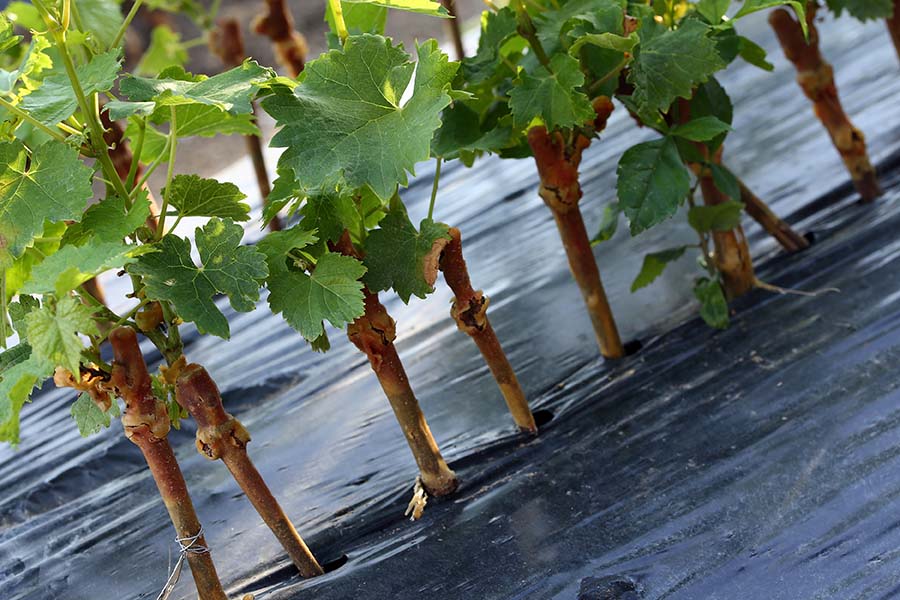The True Cost of Weeds
Every farmer battles weeds – it’s just part of the job. You’re already familiar with the direct hit to your budget: the money spent on herbicides, the fuel and labor for spraying, equipment upkeep, or similar costs if you rely on mechanical cultivation.
But these obvious expenses, the ones you see on your expense sheets, are often just the tip of the iceberg, and the costs you don’t always see can be much higher. The main one? Yield loss. Plain and simple, weeds steal from your crops. They fight for water, sunlight, and nutrients in the soil. This invisible battle slows your crop growth and can seriously slash the good, marketable product you get from each acre. Even what seems like a light patch of weeds can lead to a surprising dip in your income.
And it doesn’t stop at just lower yields. Weeds hit you in other ways, too:
Reduced Crop Quality
Weed contamination (e.g., weed seeds in grain, bits of weed in vegetables) can lower your produce quality and prices or even get a load rejected. Lots of weeds can also make your produce look bad or vary too much in size.
Increased Harvesting Costs
Whether you’re picking by hand or machine, fields full of weeds slow down harvesting. That means more labor hours, fuel, and sometimes extra work to clean the weeds out of what you’ve harvested.
Harboring Pests and Diseases
Many weeds also provide a free place for pests (like harmful insects or nematodes) and plant diseases to live and multiply. This can force you to spend more on pest control or lead to even more crop damage.
Wasted Water
Weeds drink a lot of water – water that should be going to your crops. This can push up your water and energy bills when you’re forced to irrigate more frequently.
Add it all up – the spray bills, lost yield, lower quality, extra harvest time, more pests, and wasted water – and the actual cost of weeds becomes clear as a serious drain on your farm’s profits. Understanding the hidden costs helps you weigh the benefits of a solid, long-term weed solution like an agrotextile system.
Evaluating Your Agrotextile System Investment: Key Economic Factors
While every operation is unique, and a precise return on investment (ROI) calculation will depend on your specific crops, labor costs, and local conditions, understanding the key economic factors involved will help you make an informed decision.
The Initial Investment
First, let’s acknowledge the upfront costs. These primarily include:
Material Cost:
The price of the slit film woven geotextile fabric itself is usually calculated per roll or by area (e.g., per square foot or square yard). It will vary based on the product specifications you choose.
Installation Costs:
Costs include anchoring materials (staples, pins) and labor. If you’re using your own farm crew, factor in their time; if hiring it out, include that expense.
Long-Term Savings – Where the System Pays You Back
Ultimately, the real economic value of an agrotextile system accumulates through key savings over its lifespan:
Drastically Reduced Weed Control Costs
Herbicides: Expect a significant decrease in the volume of herbicides purchased and applied to areas covered by the fabric.
Application Expenses:
This means less fuel for spraying, fewer labor hours dedicated to application, and reduced wear and tear on spray equipment.
Mechanical Cultivation:
If you previously relied on tillage for weed control, you’ll see similar savings in fuel, labor, and machinery maintenance.
Significant Labor Savings (A Major Factor)
Labor savings is often one of the most significant returns. Consider the hundreds, or even thousands, of hours your farm spends on hand-weeding or repeat mechanical cultivation in areas where the fabric can be used. An effective agrotextile system can cut these hours dramatically, freeing up your crew (or your own time) for other vital, income-generating farm tasks.
Potential Water Savings
As we’ve discussed, ground cloth can reduce soil surface evaporation and weed competition for moisture, making water use more efficient and lowering irrigation frequency and the associated costs for water and pumping energy.
Increased Revenue Potential – Boosting the Benefit Side
Beyond cost savings, consider the potential for increased income:
Improved Marketable Yields
With weeds largely eliminated, your crops get full access to water, nutrients, and sunlight, often leading to healthier plants and higher yields per acre.
Enhanced Crop Quality
Less weed pressure can mean cleaner produce at harvest, better uniformity, and potentially improved size or appearance, which can command better prices or open up new market opportunities.
Thinking About Your Farm’s ROI
You’ll need to use your own numbers to estimate the potential ROI for your specific operation. Consider:
- Your current annual spending on herbicides, fuel, and labor for weed control in the areas you’d cover.
- The value of potential yield increases or quality improvements for your specific crops.
- The expected lifespan of the agrotextile product you choose.
Comparing the initial investment against cumulative annual savings and potential revenue gains over the fabric’s life gives you a good sense of its payback period and overall financial benefit. While specific research varies widely by crop and conditions, many studies on durable ground cover systems point to a positive ROI, sometimes within just a few seasons, especially where labor costs are high, or weed pressure is intense.
Lifespan, Durability, and End-of-Life Considerations
Achieving the full economic benefit from your agrotextile system means ensuring it lasts and performs well for its entire expected lifespan. This depends on a few key factors:
Initial Product Choice:
A fabric with robust UV stabilization and a weight appropriate for your farm’s conditions is the foundation of a long-lasting geotextile system.
Proper Installation and Care:
Quality installation and consistent maintenance help maximize your system’s functional life.
End-of-Life Management:
Responsible management is essential when an agrotextile system ultimately reaches the end of its service life. Since these polypropylene fabrics are not biodegradable, they must be removed from the field. Investigate local regulations for proper disposal and explore available recycling programs for agricultural plastics in your area.




